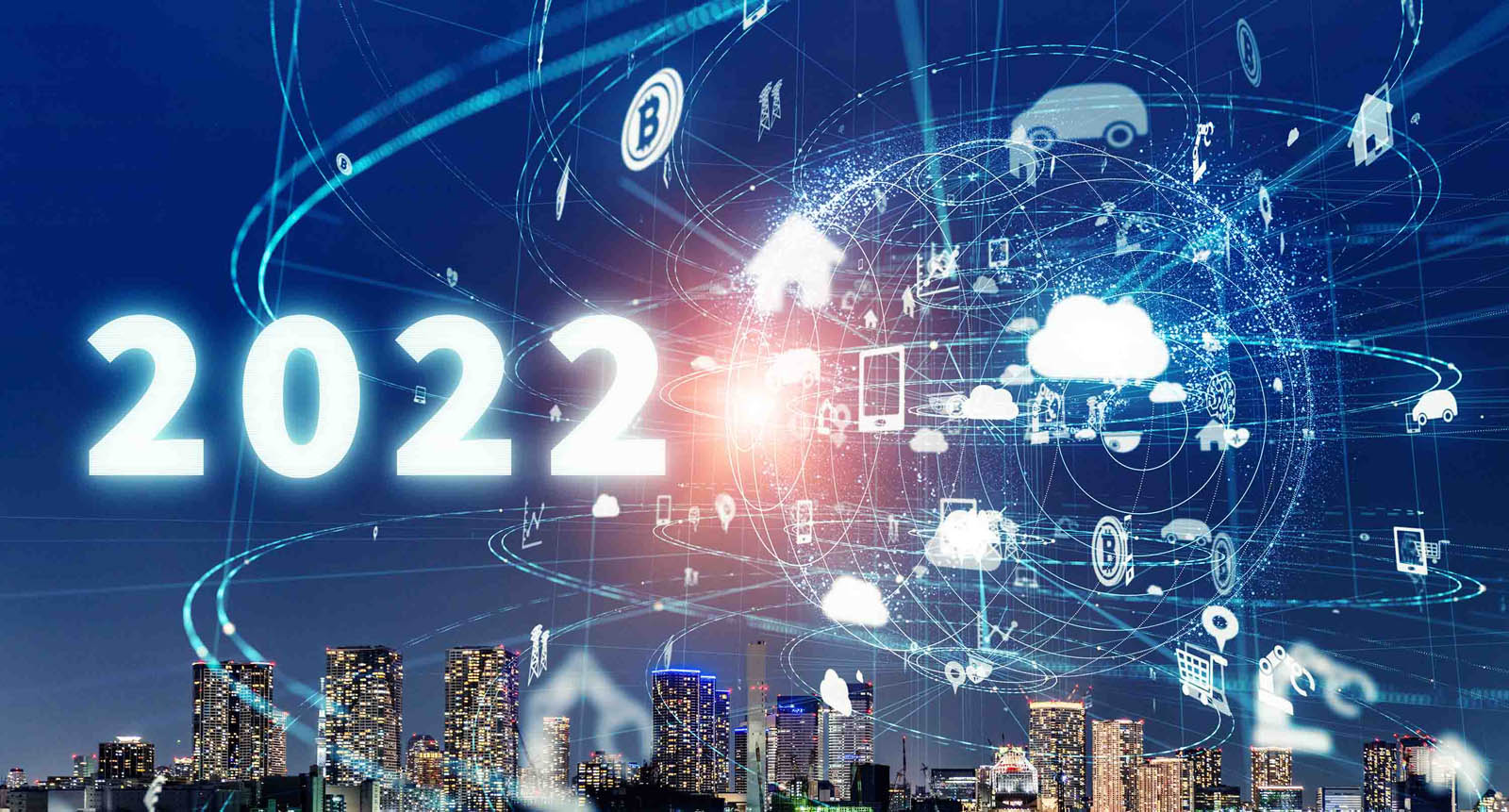
Hurtling Into 2022 And Beyond: Inspiration From CES 2022

Mary McIlrath
Senior Vice President, C+R Alum
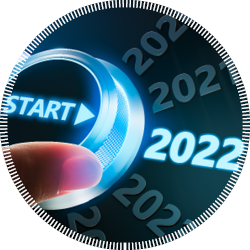
In some ways, this year’s Consumer Electronics Show slowed its roll. Organizers say attendance was about half of the usual ~170,000 exhibitors and audience members The lone C+R representative, I put it closer to 10% of the usual vibrant foot traffic. That made badge pickup and Uber/taxi/food service much easier, but it still sprawled over three convention centers, with more wonders that can be seen in a few days, as in years past. On the other hand, the sessions’ content had its foot firmly on the gas pedal, with an exciting array of what’s available today and teases about what’s coming this year and down the road. It’s the most exciting and optimistic we’ve seen all of these industries in the past two years.
Here are our top takeaways and predictions:
YOUR HOME KNOWS WHEN YOU’RE SLEEPING, IT KNOWS WHEN YOU’RE AWAKE
You’ve seen cell phone providers advertising their 5G capabilities, and the Consumer Technology Association predicts that three-quarters of smartphones sold in 2022 will be 5G-enabled.* In a nutshell, 5G networks radically reduce the latency or time it takes for data to travel between two points (e.g., a gaming platform and your controller). 5G networks in homes mean more devices can operate at once and be far more efficient than those linked to older networks. Manufacturers are doing somersaults developing home-based apps that will make your Ring doorbell look quaint. Some of these are “intelligent,” which is fancier than “smart,” because they can detect needs for changes and act on your behalf.
Just a few examples: Leave your windows open while you run out to the store and it starts raining? Use your app to close them. Don’t like the temperature of the water from your bidet? Have your voice-activated assistant heat or cool it to your liking. Even the most intimate of activities will soon be “smart.” Genie Cup is developing a menstrual cup with a sensor to detect when to change it, and a calendar app to predict when it might be needed again. Morari Medical is launching a sensor patch for men that allows them to control performance in the bedroom.
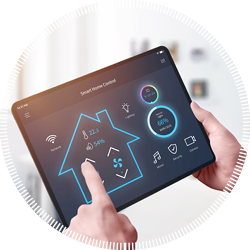
On a much less personal note, many of the new applications being created today leverage AI. More than a third of U.S. homes already have some kind of internet-controlled device. This rate is the highest globally, and it includes more than 700 million voice-controlled devices.** Do you use your Alexa or Siri to check the weather or get recipes? That’s artificial intelligence. Developers are constantly improving voice recognition software, though we know they still have a long way to go to improve accuracy with anything besides unaccented English in the U.S. But the sky is the limit for AI, as voice commands are being invented to operate everything from your wearables to your self-driving vehicle.
Let’s not forget the kitchen. Appliances will be able to order food when you’re away from home. Your Thermomix TM6 can already meal plan, shop for ingredients, and cook with several techniques, and the Yummly app can send step-by-step recipe notifications to your Whirlpool oven to guide the cooking process. Making Thanksgiving dinner? Interconnected appliances will be able to time out (and help cook) each dish so that everything comes out hot at the same time. Consumers who are concerned about sustainability will turn to sous vide devices to accept frozen food and reduce food waste. Centralized and ghost kitchens will meal-plan around each family member’s dietary restrictions (e.g., one is gluten-free, one only likes chicken nuggets) and deliver to homes – further reducing food waste while catering to individual needs.
Perhaps the culmination of network access and AI technology is the full-scale talking robot. Engineered Arts designed the Ameca robot, which looks incredibly human, and responds to questions (when asked on the trade show floor her age, she demurred). We think it won’t be too many years before she can help stock the refrigerator and even whip up your favorite treats.
One important topic that came up at the convention was sustainability. What’s being done, and whose responsibility is it to avoid the e-waste of throwing away used electronics? Some applications can track the amount of power you’re consuming in your home and even suggest “everyday sustainability” actions to reduce waste. For example, devices can suggest biking rather than driving, using reusable/recyclable straws instead of plastic, and even detect and remove microplastics from a load of laundry. Several durable goods manufacturers have formed the Home Connectivity Alliance focused not just on interoperability (i.e., compatibility of Internet of Things (IoT) devices across platforms), but also ways to save on energy bills or even become energy independent.
CONNECTED KIDS AND PETS
Wearable baby monitors have been available for several years but continue to grow more sophisticated. Our favorite new one from CES is the Chillax Baby Mood AI, which has a dimmable LED light base, an adjustable neck, and a webcam attached. Nothing touches the child, but the device can detect face covering, rollovers, and breathing rates. For parents who don’t mind their baby interacting with a device, it also includes a soother and a sleep trainer.

For older kids, one of the Innovation Award ideas this year is Jooki’s Wi-Fi- and Bluetooth-enabled speaker. It’s a screenless toy that lets kids use tokens or game pieces to create their own musical combinations. We think it’s a great way to encourage play through technology while avoiding extra screen time for youth. Even toddlers can use it. Skoog offers a similar toy that allows children to simply touch and squeeze the toy to create their own synthesized music (complete with record-scratching). It has a sister product that is soon to be launched that allows children to push buttons to receive bedtime stories—no screen time needed. We’ll be curious to see what digital pastimes we see at February’s Toy Fair in New York, also going back in person for 2022.
For the fur babies you adopted during the pandemic, puppy biometrics is now a reality. Petnow uses a nose print to capture and register pets, so a lost pooch can be identified without the invasiveness of microchipping. Trying to train your dog to stay in their allowed zones while you’re away from home? You need the Wagz Freedom Smart Dog Collar. This uses a non-shock smart collar and an app that allows pet parents to create virtual indoor and outdoor fences to restrict “no-go” areas like outside the yard, bedrooms, or near the kitchen garbage can. When Fido gets too close to a fence, it can vibrate or use noise to redirect behavior. It avoids the pain of an electronic fence shock collar—and it doesn’t require digging up the yard to install.
Robot assistants aren’t just for humans anymore, either. Whisker offers a Feeder-Robot, that is Wi-Fi-enabled and operated through the unit’s control for automated feedings or remotely through an app, so no one has to go hungry when you get stuck late at work. For cat lovers, the same company has unveiled the Litter-Robot 3 Connect, also running on Wi-Fi, that detects motion and auto-scoops, so the high-tech litterbox is always fresh and clean-smelling (and no tracking old deposits onto furniture). It’s not cheap at $549, but some of us here are seriously considering investing.
WHAT WAS “CLIPPING COUPONS,” GRANDMA?
Everyone knows that the pandemic spurred a sea change in the way consumers shop. Self-checkout and Amazon Go already existed, then once COVID came along, Instacart flourished, as did Amazon. Small businesses had to accelerate their technology adoption to allow online ordering, contactless payments, and minimal employee interaction. But what does the future look like for shoppers?
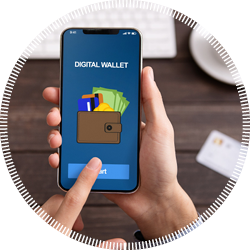
First, the digital wallet experience will grow exponentially. More shoppers will be able to leave the house with just a phone, no wallet, or keys. Already, the iPhone digital wallet can serve as an ID, home, office, or hotel room key, ID card for airport security, drivers’ license, event ticket, and vaccination passport. BMW has an option for it to serve as a car key. It’s likely that shoppers will have more than a single digital wallet (e.g., one for the refrigerator to order groceries). And expect to see greater availability of biometric wallets in the future. Fingerprints, retinal scans, even palm scans will be used to access modes of payment, loyalty card programs, and special offers. Expect the ability to order with a tweet, or from a watch, and pick up from a locker, or ask for delivery to your home or wherever you may be (beach picnic, anyone?). Expect to be able to pay with cryptocurrency or NFTs (non-fungible tokens, blockchain-based digital tokens that show proof of a unique, digitally stamped piece of content like artwork). When buying a car, expect to be able to do as much of the paperwork online as desired before coming into the dealership (everyone hates sitting around for the financing conversation).
Marketing tactics for shoppers are changing as well. Take the Target Circle loyalty program, for example. Upon signup, users create a profile so Target knows who to target with which offers on the website or in the aisle. When a teacher is in the school supply aisle, they can receive a personalized, contextual offer. This kind of ultra-personalization of offers and services will come with the gradual change we’re witnessing in the structure of marketing campaigns. Instead of relatively brief hits of messaging and “same sale price fits all,” we’re beginning to see constant streams of content tailored to individual shoppers.
Some of these nontraditional campaigns are quite brilliant. Quick-serve restaurants are moving towards celebrity partnerships (we’re looking at you, Megan Thee Stallion’s Hottie Sauce at Popeyes, and The BTS Meal at McDonald’s). Smart retailers will all have their own apps allowing 24/7 engagement with “sticky” digital content to drive sales.
VROOM VROOM GOES ZOOM ZOOM
How ironic that a drastically scaled-down in-person conference, we spent so much time talking about travel. As Secretary of Transportation Pete Buttigieg said in his address, “since the invention of the wheel…technology powers the human journey.” At the local level, “smart cities” will have enough digital infrastructure and populations with access to revolutionize commutes. Traffic management systems for public transportation, the prevalence of ePayments for everything from trains to parking meters, and clean, sustainable energy indicate the relative “smarts” of a city. Everyone’s talking about electronic vehicles (EVs) and how to power them over the long-haul driving that many Americans do. One solution is a government-sponsored solar roadway underway in Georgia that will help power EVs, in addition to a grid of charging stations and apps to gauge the best stops on a route for a quick bolt of energy.
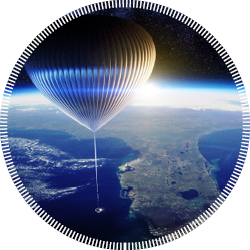
Another panelist commented that “CES has evolved into a car show” because of all of the features that are continually being developed and introduced. Self-driving vehicles are still in a nascent mode but coming soon. Snapdragon’s platform supplies a “digital chassis” that auto manufacturers can use to launch their own unique driving experiences; while Volvo and Ford may use the same underlying software, they can tailor the driving experiences to uniquely fit their brand promises.
Heading to the airport, TSA is working on prototypes of self-screening kiosks (think self-checkout but with bags). They have a prototype station set up at Las Vegas’s Harry Reid airport, Terminal 3, if you want to check it out. First, biometrics/facial ID can be used to check in a bag. At security, the kiosk has a slot for inserting an ID, so known travelers don’t have to interact with a TSA officer for identification verification. Then, bags are placed into bins that run through the scanner, which officers can monitor remotely from another room. They continue to evolve the screening process to be more touchless, faster, and more comfortable for the 2.5-3 million passengers a day who pass through their checkpoints.
If you’re dreaming of space travel but can’t afford a seat on Virgin Galactic or Blue Origin, check out Space Perspective. Their space balloon journeys will be available starting in 2024 for a much more affordable $25,000 than the hundreds of thousands or millions of dollars for a rocket experience. They’re billing it as a more luxurious, comfortable, and longer journey. The balloon takes 2 hours to get to outer space, and as such, doesn’t slam its guests with G forces. Once outside the atmosphere, they cruise for 2 hours (with a bar and loo on board), then take another 2 to gradually descend for splashdown, where a yacht picks them up and returns them to land. Their Spaceship Neptune is being developed as a net-zero carbon journey. We’re intrigued!
BUCKLE IN TO THE METAVERSE
For much of 2021 and all over CES, everyone is talking about the Metaverse. In layman’s terms, the Metaverse is a bridge between digital and tangible worlds, also known as XR (mixed reality, encompassing augmented, virtual, and actual reality). Think of it as Pokémon Go on steroids. Lots of steroids. You may already be skirting its edges. Do you have a Roblox avatar? Did you ever play Sim City or Second Life? Do you play video games or participate in virtual reality while hanging on to a controller and talking to other people? You’re in the Metaverse.
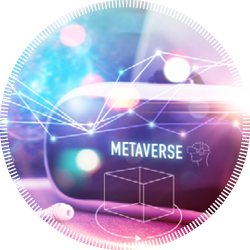
It’s rapidly growing and will have implications for everything we’ve discussed here so far. The 5G networks will allow an exponential increase in the inputs and outputs that can be made on any individual platform, including haptic apparel, sensors, visuals, etc., to support interactive 3D moving images. It will support a new “meta economy” using cryptocurrency and NFTs that allow collaborators to exchange funds without involving banks (known as decentralized finance, or DEFI). Expect business applications as well, with shopping experiences, avatar-to-avatar meetings, and telehealth sessions, all utilizing shared virtual spaces.
On Metaverse-based platforms, some data is sent up to the cloud for storage, while other data is kept “terrestrial” and shared between individuals. This begs the ethical question of “who owns the data?” Given that no one really reads privacy policies, or if they do, can’t wrap their heads around the legalese, this is a real question that will need wrangling at every step. It is incumbent upon designers to be transparent about how people’s data are being used and to provide opt-outs that are simple to understand.
TOMORROW, POWERED BY RESEARCH
We saw and heard some very exciting content and prototypes at CES, and it made us think about applications and implications for our industry. On the simple side, it can mean enhanced paywall usage as a means to incentivize research participants. As our colleague, Sergio Patiño says, “you’re in a game, find a pot of gold, take a survey, get the gold.” Sounds engaging, yeah?
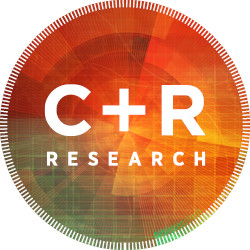
In a more complex scenario, a shared virtual space could be accessed with glasses, headsets, computers, etc., when collaboration is important. Think about the focus group experience with shared brainstorming and idea capturing. Or a strategic activation session among your brand team in which ideas can be marked up together voted on and optimized. The most complete sessions could involve 3D printing a redesigned prototype, of which a “digital twin” could be introduced to a subsequent session.
Of course, as Metaverse-based platforms are developed, a great deal of consumer research will be necessary, from concept testing to UX research and everything in between. C+R is well-poised to help with these investigations, and we see this as an important tenet of the research industry in the next 5-10 years. If you have a need in this space, please don’t hesitate to reach out—we’d love to talk!
*Source: U.S. Consumer Technology One-Year Industry Forecast, January 2022
**Source: Consumer Technology Ownership & Market Potential Study, 23rd edition
explore featured
Case studies
